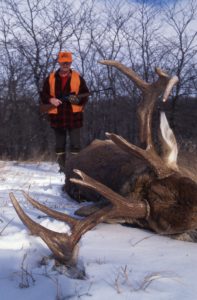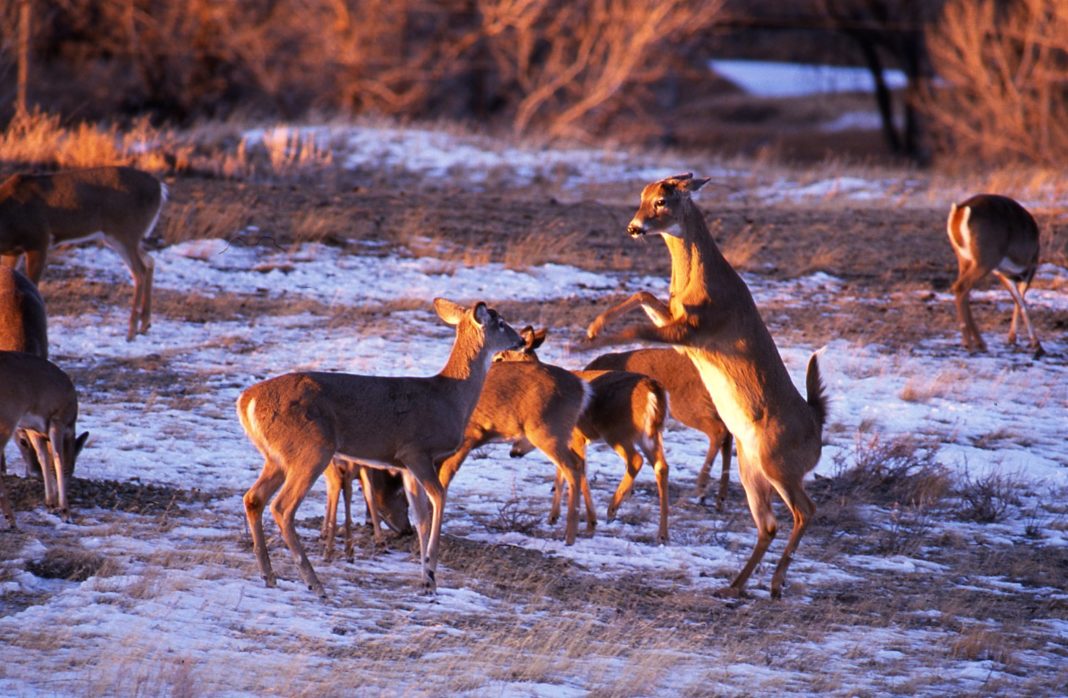Whitetail deer antlers are among the most amazing elements of nature. How can bucks grow a sizable percentage of the bone in their body in a few months, use it for battle and breeding dominance, and then have it fall off, only to grow again another year. Deer hunters take the antler cycle in stride, yet it’s on the level of “The Force” in science fiction movies. Given the incredible cold weather of recent weeks, the question arises, “Will this suddenly (early) advent of frigid temperatures cause deer to shed their antlers earlier than normal?” Generally, antler stages are driven by ambient light and when certain critical thresholds are met, the antlers fall off. For example, a local deer hobbyist kept a buck in captivity which annually shed its antlers on the first day of spring. Although that date changes by up to a day, the buck was on the celestial clock and shed them on que.
Hunter’s Beware
 Antler shedding can affect late hunting seasons, especially those where does are often harvested to extend the hunter’s venison supply. Bucks drop antlers at varying times and may be one reason that some deer enjoy more longevity than others. A buck that shed in early January will get passed by late season archers who assume the animal is a doe. On the other hand, a muzzleloading or late-season rifle hunter may want a fat doe and think a shed-buck fills that bill. I once hunted in South Dakota in mid November and spotted a beast of a buck walking right toward me. I could see the animal was built like a steer and readied for the shot. As it approached, I could not see antlers, despite a swollen neck and obvious buck silhouette. Ironically, it passed below me and I could see the fresh pedicle where its antlers had attached. Luck buck… disappointed hunter.
Antler shedding can affect late hunting seasons, especially those where does are often harvested to extend the hunter’s venison supply. Bucks drop antlers at varying times and may be one reason that some deer enjoy more longevity than others. A buck that shed in early January will get passed by late season archers who assume the animal is a doe. On the other hand, a muzzleloading or late-season rifle hunter may want a fat doe and think a shed-buck fills that bill. I once hunted in South Dakota in mid November and spotted a beast of a buck walking right toward me. I could see the animal was built like a steer and readied for the shot. As it approached, I could not see antlers, despite a swollen neck and obvious buck silhouette. Ironically, it passed below me and I could see the fresh pedicle where its antlers had attached. Luck buck… disappointed hunter.
During this past week, friends from Kansas, Wisconsin and even South Carolina have told me about hunting in temperatures that were much colder than normal. A fellow wildlife biologist in western Kansas shared with me that it was –21 degrees there a few days ago. That was the actual air temperature, not the wind-chill. His son had been out calling coyotes. Needless to say, his son is much tougher than me!
Imagine the stress such temperatures cause whitetail deer. Unlike you and me, deer can’t add an extra layer of clothing or stuff a few hand-warmers in some pockets. Often when temperatures are cold, whitetails will bed on south- and west-facing slopes, or areas that are out of the wind and receive the sun’s radiant energy. Even with these energy conservation measures, extremely cold conditions cause them stress.



















![The Best Deer Camp Chili [VIDEO] Deer Chili Ingredients, Tomatoes, Chili Spices](/wp-content/uploads/2015/10/Deer-Chili-Deer-Camp-Recipe-218x150.jpg)
![How to Call Elk Early in the Season [VIDEO]](/wp-content/uploads/2016/08/byers003-218x150.jpg)




![Idiots Disturb Hunter: How Would You Have Handled It? [VIDEO]](/wp-content/uploads/2015/10/DSC00110-e1474487693878-100x70.jpg)
![Albino Buck Shocked to Shed His Antlers [VIDEO]](/wp-content/uploads/2015/10/AlbinoDeer-100x70.jpg)